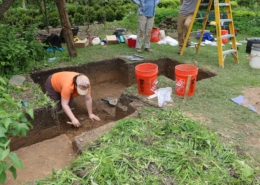 https://tudorplace.org/wp-content/uploads/2023/12/Ancestral-Spacse_web-scaled.jpg
1707
2560
Comms2018
https://tudorplace.org/wp-content/uploads/2020/01/2020-01-23-300x155.png
Comms20182024-03-28 16:09:492024-03-28 16:11:41Ancestral Spaces: People of African Descent at Tudor Place (Tickets for April 23 – April 28)
https://tudorplace.org/wp-content/uploads/2023/12/Ancestral-Spacse_web-scaled.jpg
1707
2560
Comms2018
https://tudorplace.org/wp-content/uploads/2020/01/2020-01-23-300x155.png
Comms20182024-03-28 16:09:492024-03-28 16:11:41Ancestral Spaces: People of African Descent at Tudor Place (Tickets for April 23 – April 28) https://tudorplace.org/wp-content/uploads/2024/04/Tots-Family-scaled.jpg
1707
2560
Comms2018
https://tudorplace.org/wp-content/uploads/2020/01/2020-01-23-300x155.png
Comms20182024-04-10 11:27:122024-04-10 11:35:07Tudor Tots: What Branches Are on Your Family Tree?
https://tudorplace.org/wp-content/uploads/2024/04/Tots-Family-scaled.jpg
1707
2560
Comms2018
https://tudorplace.org/wp-content/uploads/2020/01/2020-01-23-300x155.png
Comms20182024-04-10 11:27:122024-04-10 11:35:07Tudor Tots: What Branches Are on Your Family Tree? https://tudorplace.org/wp-content/uploads/2024/02/Archaeology-of-a-Possible-Enslaved-Home-Space-at-Tudor-Place-scaled.jpg
1707
2560
Janet Wall
https://tudorplace.org/wp-content/uploads/2020/01/2020-01-23-300x155.png
Janet Wall2024-02-13 16:51:242024-04-01 11:49:56Landmark Lecture: Archaeology of a Possible Enslaved Home Space
https://tudorplace.org/wp-content/uploads/2024/02/Archaeology-of-a-Possible-Enslaved-Home-Space-at-Tudor-Place-scaled.jpg
1707
2560
Janet Wall
https://tudorplace.org/wp-content/uploads/2020/01/2020-01-23-300x155.png
Janet Wall2024-02-13 16:51:242024-04-01 11:49:56Landmark Lecture: Archaeology of a Possible Enslaved Home Space https://tudorplace.org/wp-content/uploads/2024/01/Toast-and-Tour-scaled.jpg
2560
1707
Comms2018
https://tudorplace.org/wp-content/uploads/2020/01/2020-01-23-300x155.png
Comms20182024-01-10 16:13:322024-01-22 12:21:46Champagne Toast & Tour
https://tudorplace.org/wp-content/uploads/2024/01/Toast-and-Tour-scaled.jpg
2560
1707
Comms2018
https://tudorplace.org/wp-content/uploads/2020/01/2020-01-23-300x155.png
Comms20182024-01-10 16:13:322024-01-22 12:21:46Champagne Toast & TourFollow a manual added link
SLAVERY AT TUDOR PLACE
As an historic site that bears the scars of slavery, Tudor Place seeks to look this injustice in the eye. Click here to learn more.
Museum & Collection
Garden
Calendar
Education
Join & Give
Advance registration encouraged; suggested donation. Click for info.

1644 31st Street, NW | Washington, DC 20007
202-965-0400 | info@tudorplace.org
Museum & Collection
Garden
Calendar
Education
Join & Give
Advance registration encouraged; suggested donation. Click for info.

1644 31st Street, NW | Washington, DC 20007
202-965-0400 | info@tudorplace.org


